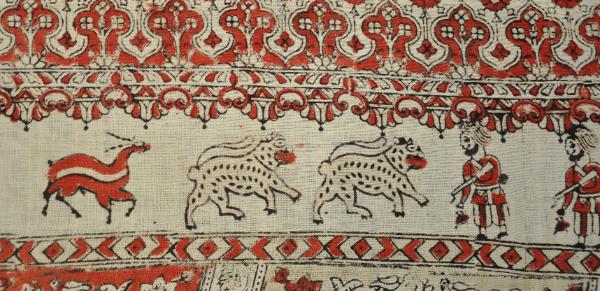
Indian Cotton Tent Hanging, circa 1800
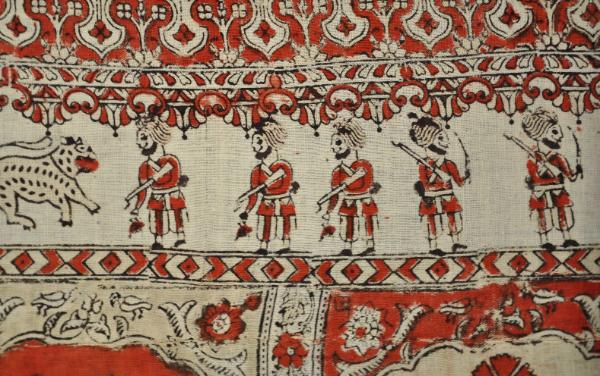

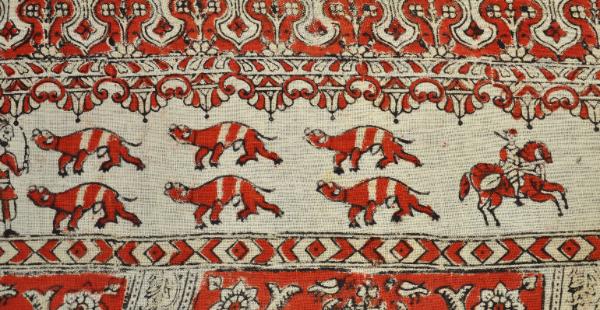
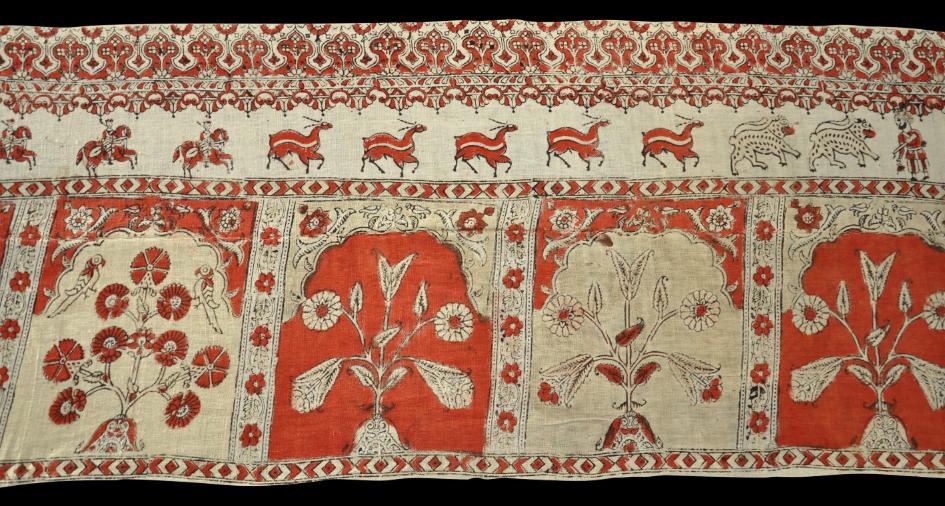
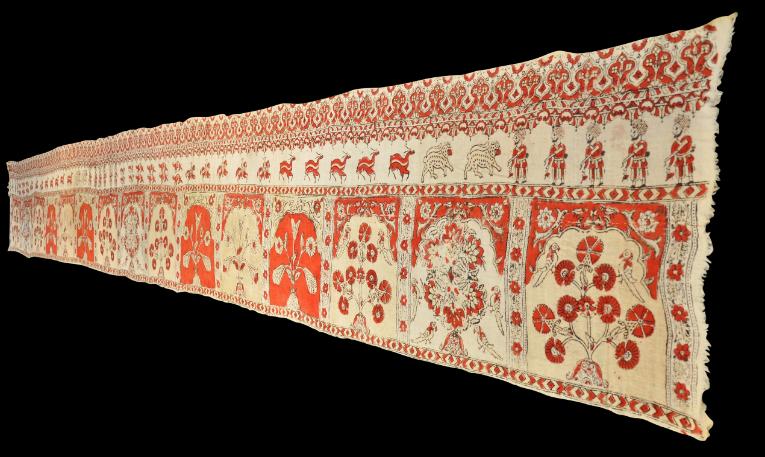
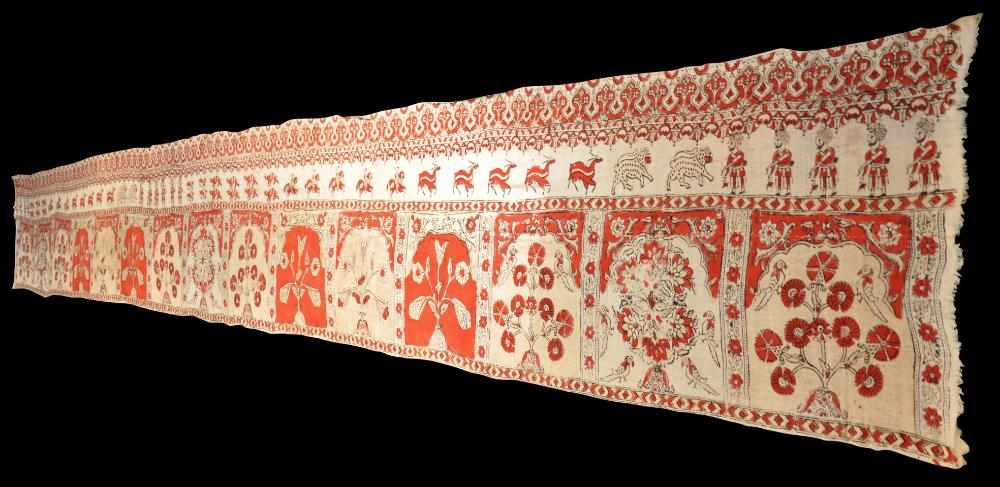
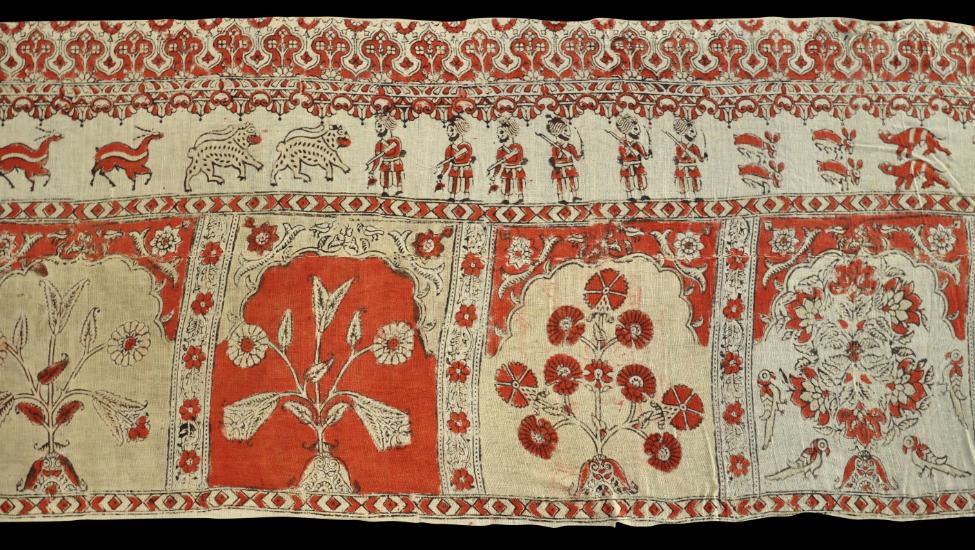
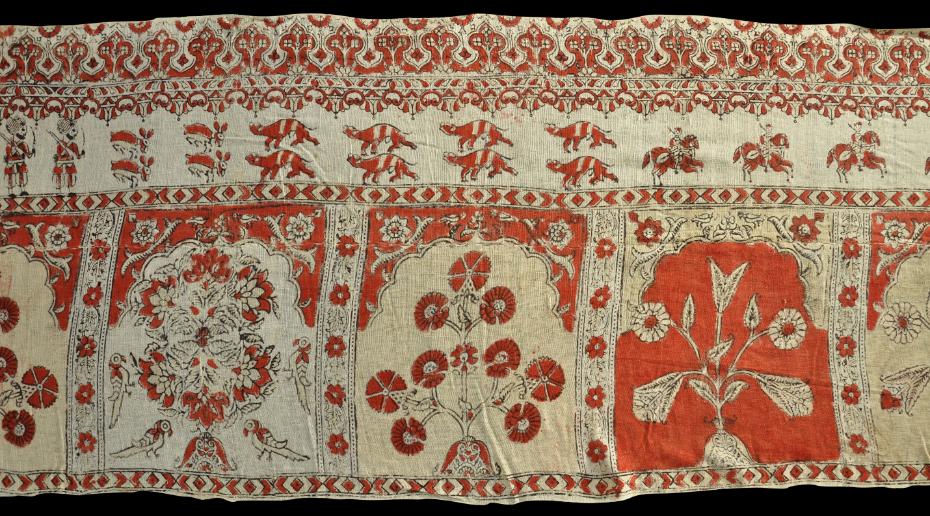
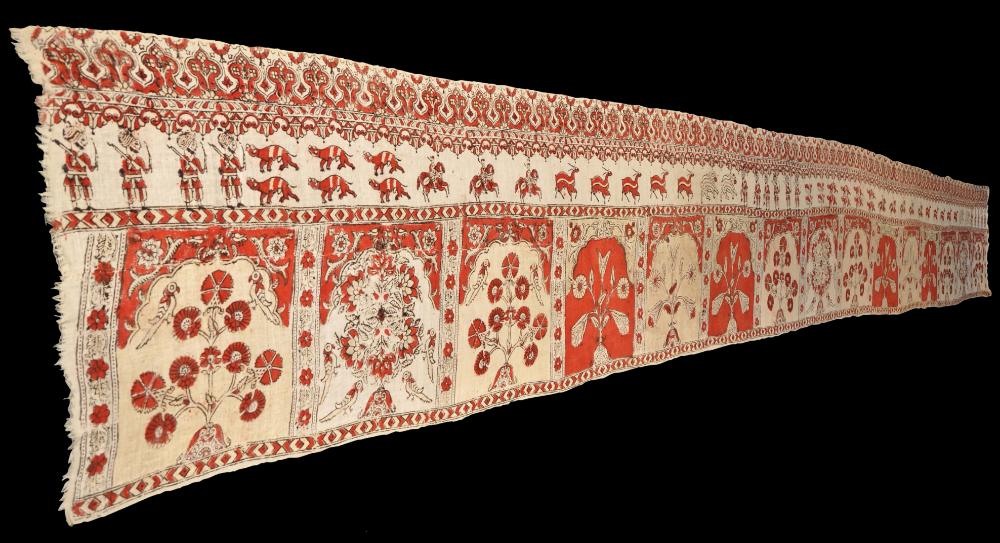
Complete Cotton Tent Hanging (Qanat)
India
circa 1800
length: 640cm x 79cm
Complete tent hangings or qanats of this type are rare. Most surviving examples have been cut up and are fragments. This example comprises fifteen Mughal-esque arched panels filled with flowering shrubs within red and cream borders and beneath a frieze of turbaned soldiers, horses and riders, and groupings or bear and deer-like creatures. Plain, ruffled edging can be seen at either end, indicating that the end of the block-printed design and hence the end of the qanat has been reached, thus demonstrating its completeness.
This
qanat is divided into two panels of approximately equally-sized homespun plainweave cotton cloth, that have been sewn together breadthwise. (The original stitching is present and completely intact.)
It has been block printed with red and black dyes against a yellow-cream and plain background. The thread joining the two panels also has the dye showing that the thread is original and that the panels have not been re-sewn at a later date.
There are no repairs, tears, or insect damage; the textile is in fine condition given its age.
to see a related fragment in the Penn Museum. See Vangeyzel (2008, p. 168) for another fragment example, and Dye (2001, p. 467) also for another related fragment.
According to Dye (2001), the Mughal emperors had entire portable cities created from textiles. Camps comprising tents for every possible purpose from kitchens to sleeping quarters to storage were ordered as well as textile screens and fabric enclosures. The interiors of many of the tents, particularly those for the emperor and his inner circle, were lined with printed hangings decorated with flowers and the like. The traveller Francois Bernier wrote in 1664 that the royal enclosure of Emperor Aurangzeb’s camp was surrounded by
qanats, fabric screens, or tent walls seven or eight feet high, and that the interior of the Emperor’s tent was lined with smaller flowered qanats. Other rulers in norther and central India are likely to have followed suit and commissioned their own tented encampments with the requisite floral qanats.
References
Dye, J.M., The Arts of India: Virginia Museum of Fine Arts, Philip Wilson Publishers, 2001.
Vangeyzel, G.E.,
Traditional Textiles in the Colombo National Museum, National Museum of Sri Lanka, 2008.Provenance:
UK art market
Inventory no.: 3040
SOLD
to see other Islamic and Asian textiles.

